You can purchase Eye wash for cats and kittens at a drugstore:

- What to do if a cat's eye is pusy, what to rinse with
- When is it necessary to flush a cat's eyes
- What to rinse with?
- Medications
- Folk remedies
- How to perform the treatment?
- For adult cats.
- Newborn kitten
- What to wash the eyes of a cat or kitten
- How to wipe the eyes of an adult cat
- Peculiarities of the procedure
- In adult pets.
- How to wash a kitten's eyes
- What to wash a kitten's or cat's eyes with as a prophylactic
- What treatment is prescribed depending on the symptoms
- Treatment of conjunctivitis
- Prevention of pus-filled eyes
What to do if a cat's eye is pusy, what to rinse with
The owners of their pets are very anxious about their health. If a beloved cat's eye is pus, you immediately rush to help and look for what you can wash it out at home. Perhaps you need to put in medicinal drops. But to do this, you need to know what kind of drops are needed, it is good to have them at home or know where to buy them.
Normally, there should not be any pus-like discharge from the eyes of cats. The presence of suppuration is an inflammatory process. It can be expressed in varying degrees of severity. That is, we are talking about an infectious disease of your pet's eyes. Of the main causes of such a condition, the following can be distinguished:
- There may be mechanical damage to the retina, accompanied by an inflammatory process, later there may be watery discharge. This is what you see in the form of clusters at the inner corners of the eyes as hard brown or black small lumps.
- This is the result of chemical exposure, after which the edges of the eyelids become inflamed (blepharitis).
- Colds and allergies may often result in clear or whitish mucus coming out of the eyes and nose.
- This is how the animal's body may react to the presence of pathogenic microflora. Yellowish or greenish secretions are easily recognized by the characteristic purulent odor.
- A complication after conjunctivitis, which occurs if the vet is belatedly contacted.
- The presence of helminths that poison the cat's body with their waste. Allergic reactions resulting from this cause mucus to come out of the nose and the eyes begin to pus.
- Some cat breeds are prone to inflammatory eye disease due to their anatomy (sphynxes, lop-eared Scots, etc.).
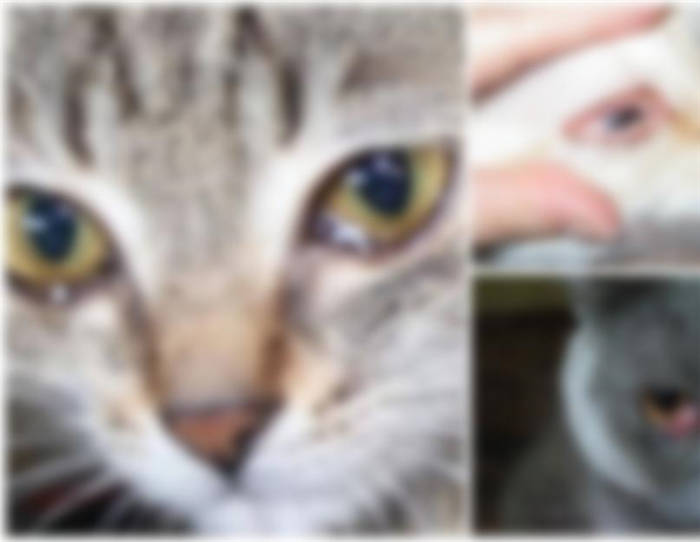
- drowsiness, general lethargy, loss of appetite;
- an increase in body temperature;
- desire for seclusion in dark corners;
- The cat often squints or closes its eyes;
- a peculiar odor;
- Occasional occasional cough, runny nose, redness of mucous membranes.
When is it necessary to flush a cat's eyes
There are times when your pet is not able to wash well by itself:
Then you should help your pet or pet once a day. More often it is necessary to rinse the pet's eyes if there are all the signs of illness.
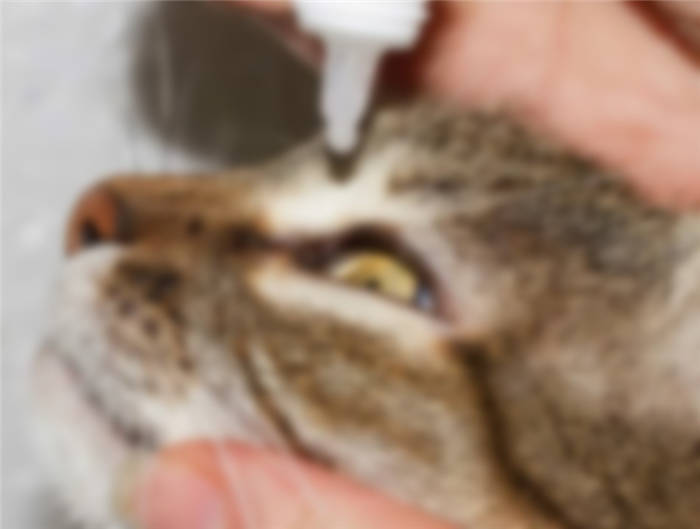
You should always remember that in severe cases you just need to go to the veterinarian. Self-treatment here can prolong the disease process and even make it worse. And your pet will get a complication or even lose an eye. Only a specialist can make the right diagnosis and prescribe the appropriate treatment, in which eye (eye) flushing will have an important place.
If you just need prevention or a little cleansing, you can do a certain number of treatments yourself until a good result is sustained. Remember the precautions:
- The cat's eyes should be rinsed with boiled warm water;
- The use of cotton pads or gauze swabs is recommended;
- be sure to use different sponges or disks for each eye;
- Chamomile decoction can cause hair loss in the treatment areas;
- always make sure that the treatment you start has a long-lasting effect.
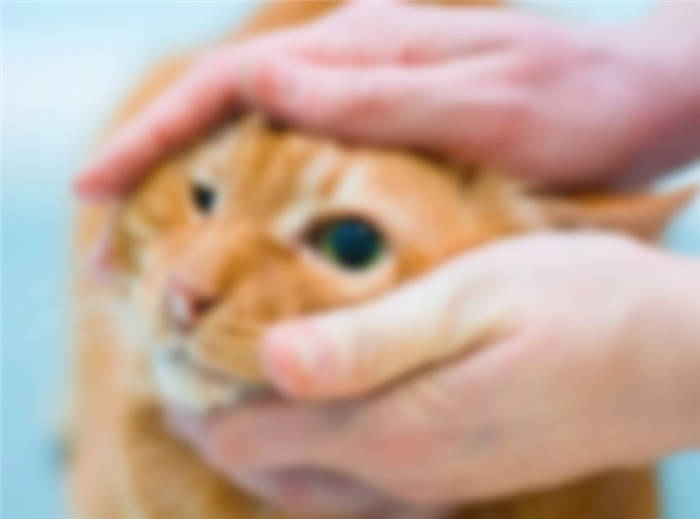
What to rinse with?
Medications
If the organs of vision in the animal is sour, you can clean them with warm boiled water. And to rinse the cat's eyes from pus, the following medications are used:
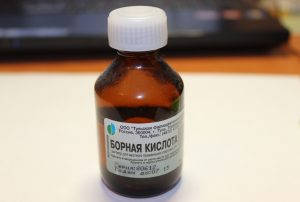
- "Furacilin." Before treating the cat's eyes, the solution of "Furacilin" is diluted with water 1:5. A more concentrated product can cause redness and burning, or even burn the cornea.
- Boric acid. It is recommended to treat the affected area when it is purulent. Boric acid solution is not used if the integrity of the mucous membrane of the visual organs is compromised.
- "Miramistin. Drops have a bactericidal effect. Treatment with "Miramistin" helps with inflammation of the organs of vision with the release of pus.
- "Chlorhexidine". Wipe the cat's eyes with "Chlorhexidine" is prescribed for suppuration or to prevent the penetration of infection after injuries or surgical interventions.
- Peroxide. Washing the eyes with hydrogen peroxide is recommended when the eye is injured to remove pus.
- Manganese. Make a solution of pale pink color, because a more saturated agent can provoke burns of the visual organs. The remedy relieves inflammation and disinfects.
Veterinarian T. Ilyina recommends washing kitten's eyes from dried pus crusts with infusion of green tea, calendula or succession.
Folk remedies

If there are no pharmacy preparations at home, then the cat's visual organs are washed with medicine prepared at home. The following recipes are the most popular:
- Infusion of linden. Take 2 teaspoons of linden flowers, pour boiling water in an amount of 200 ml and insist half an hour. This tea can be used to wash sour eyes of newborn kittens. The decoction is very good for relieving inflammation.
- Tea with chamomile. It relieves inflammation, and also helps with sticking eyelids and frequent souring of the visual organs. 50 g of chamomile flowers pour a glass of boiling water and allow to infuse for 20 minutes.
- Black tea. It is used as an adult cat and a newborn kitten to reduce inflammation. Positive results are already visible after 2-3 washes. To prepare the solution, take 1 teaspoon of coarse-leaf brew, pour it with a glass of steep boiling water and steep for 10 minutes.
- Aloe. Freshly squeezed juice of the plant is dripped with a pipette into the cat's diseased organs of vision. The procedure is repeated twice a day. Aloe eliminates inflammation and moistens the cornea.
How to perform the treatment?
For adult cats.
It is difficult to wash the visual organs of the cat by itself, so it is better to carry out this procedure with someone else who will hold the animal. The correct way to do the flushing is as follows:
- Prepare the necessary equipment. Take absorbent cotton, bandages or gauze napkins and a syringe without needle.
- The animal is secured so that it will not scratch the person, wrapping a towel around it.
- The gauze napkin is moistened in a therapeutic solution and squeezed over the cat's eyes.
- Wait a few minutes for the crust to become soft, and then wipe it off with a cotton pad. The movements should be from the edge of the eye to the inner corners.
- If the eyelids are glued, then the movements of the cotton disk are done from the nose to the ear, changing dirty disks with clean ones.
- The medicine is poured into a syringe and poured on the cleaned cornea.
- Soak excess medication with absorbent cotton or bandage tampon without touching the eyeball.
Persian cat's eyes are convex, so they are washed daily to prevent inflammation.
Newborn kitten
Kittens come into the world completely blind, and begin to see well after 2 weeks. The iris has a gray cloudy color, after some time its color changes according to the breed of cat. In the first days of life, kittens secrete mucus from the visual organs, it is removed by the mother cat. When the babies grow up, they wash their own eyes, but there are times when they need outside help. A small kitten is washed the eye organs in the same way as an adult cat, only the treatment should be more careful and gentle. The procedure can be done by one person. After washing, the prescribed eye ointments are applied after 5-10 minutes, so as not to cause a negative reaction of the two active substances.
What to wash the eyes of a cat or kitten
Use saline, chlorhexidine water solution or special lotions available at veterinary drugstores to remove dirt not related to pathological processes. These products will help soften dried crusts in the corners of the eyes and make the procedure painless for the pet.
Saline is better for removing scanty, non-purulent secretions. If your pet's eye looks inflamed, use chlorhexidine water solution or lotion: it has a disinfectant and soothes irritation.
Decoctions of herbs, such as marigold or St. John's wort, can also be used to clean minor discharge from the eye. Before carrying out the procedure, it is better to consult a veterinarian to avoid the development of allergic reactions.
Despite the many tips on the internet, Black tea decoction should not be used for the procedure. It contains tannins, which can be harmful to the tissues of the eye.
If the ocular discharge is a consequence of ophthalmic diseases or injuries, only a veterinarian can prescribe an eye wash based on the diagnosis.
The following are used to treat purulent discharge antiseptic Antiseptics are used to treat pus: they help fight the bacteria that cause the inflammation. When keratitis and corneal diseases are prescribed metabolic Medications are prescribed to speed up the process of cell regeneration. Conjunctivitis and blepharitis therapy is usually associated with the use of antibacterial и anti-inflammatory Drops or ointments.
How to wipe the eyes of an adult cat
For the procedure to go quickly and without unnecessary stress, you need to take care of the emotional state of the cat. If the cat is in an aggressive mood or is in the process of playing, you should wait until he calms down and only then proceed with the eye wash.
It is better to carry out the procedure immediately after the pet wakes up or after active play and a heavy dinner, so that it does not put up resistance.
- Prepare the necessary tools: a tampon or a sterile napkin without lint and the product itself – it must be at room temperature.
- Carefully read the instructions for use of the drug and the doctor's recommendations.
- Sit the cat in a comfortable position and gently hold its muzzle so it does not twist its head. If the cat resists, gently support him with a blanket or towel. You may need a helper.
- Spread some product on dried crusts and let them swell for a while. Don't tear off crusts without soaking them first: you will tear off his coat and cause him pain.
- Moisten a cloth or sponge liberally with the product and remove dirt, moving from the outer corner of the eye to the inside. Movement in the opposite direction can bring infection inside the eye and lead to inflammation.
- Repeat the same steps with the other eye. Use a different swab for each eye to avoid transferring the infection from the sick eye to the healthy eye.
- Use an eyedropper to drip the medication, if needed, and remove the excess with a clean tissue.
- Praise your pet and give him a favorite treat.
Eye-washing, like any hygiene procedure, should be associated with something pleasant for your pet. Therefore, do not use force, raise your voice, or scold your pet if he refuses to sit still. Use a humane fixation with a towel, praise the pet, and treats to encourage proper behavior.
Peculiarities of the procedure
There are no fundamental differences in washing the eyes of an adult pet or kitten: the scheme of performing the procedure is almost identical. The difference lies in the small nuances that will help to help the pet as much as possible and do no harm.
It all starts with preparing the necessary materials – you will need:
For aggressive or fidgety animals, a towel – you can wrap the animal in it – or a carrier bag will come in handy.
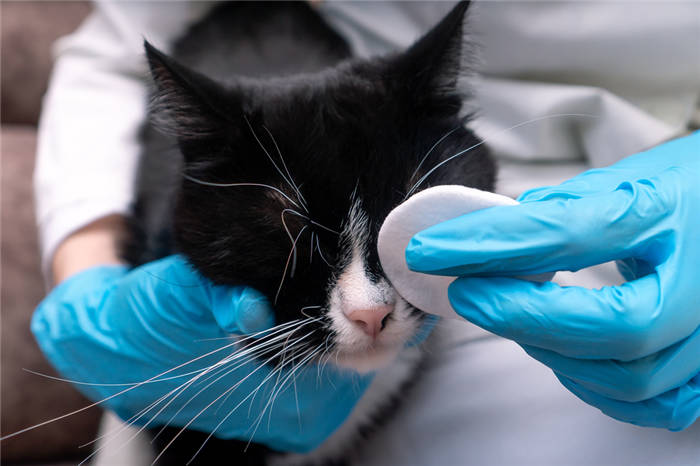
In adult pets.
Adult cats may resist, so a helper will be needed – he or she will hold and calm the animal. The cat should be wrapped in a towel or blanket to gently hold it and not harm it during the procedure. Once the animal has been secured, you can begin rinsing.
First you need to soak the dried crusts, if any. Dipping a cotton pad in the medicinal solution, you need to squeeze the product into the sore eye and wait until the crusts become softer and more accessible for removal. Gently wipe your eyelid with the disc, trying not to touch the cornea. The movements should be directed from the ears towards the nose, towards the tear duct. Use different discs on different eyes to avoid contaminating the healthy eye.
After the eyes are cleaned, pour the medication solution onto the cornea of the eye, using a syringe without a needle – if the treatment requires it. Routine hygienic cleansing can be left without this action. Use a dry cloth or towel to wipe up any residual solution around the eyelids. Do not squeeze and try not to touch the eyeball with the cloth so as not to traumatize it and cause irritation.
How to wash a kitten's eyes
Kittens don't always do well with washing, as they are used to having the mother cat do the hygiene. During the first few months, the owner needs to rinse the baby's eyes regularly to prevent them from starting to stick and fester.
What to wash a kitten's or cat's eyes with as a prophylactic
It is recommended to monitor the condition of the cat's eyes from an early age. Newborn kittens' eyes open after one or two weeks. If the eyes have not opened by the end of the third week, you need to rinse them very carefully.
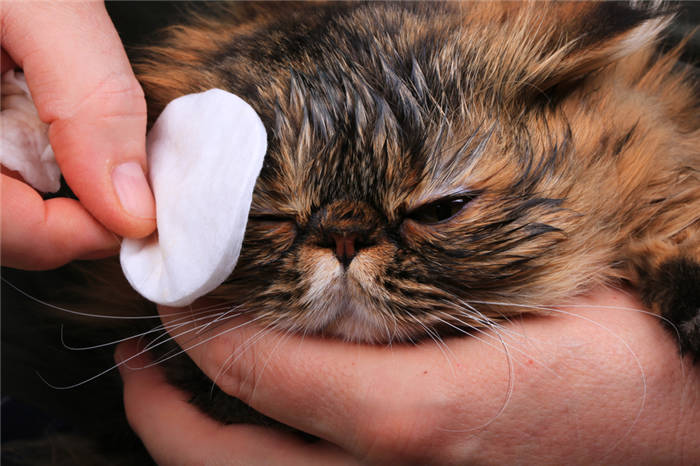
Adult cats take care of their own hygiene. The daily feline ritual includes washing the muzzle and eyes. But it happens that the cat gets hurt or cat catches a disease – to prevent complications, periodically examine the cat. If you notice a cloudy or discolored iris, pus-like discharge, or fur on the muzzle with traces of tears, see your veterinarian right away. If you find an injury, do not let your pet rub the eye, as this irritates the mucosa. You should not force your pet's eyes open. Do not self-administer medications containing prednisolone or dexamethasone – you may make the situation worse.
The attending veterinarian will advise on what to wash the cat's eyes with as a preventive measure. You can soak a cotton pad in strong tea or saline and then clean the eye with smooth movements. All this is necessary if the cat periodically has brown crusts – consequences of poor hygiene and dust on the cornea. It is not dangerous if the accumulation from the lacrimal corners is removed in time.
Don't forget to vaccinate your pet once a year, staying on schedule. If you have an elderly or weakened pet, see the veterinarian regularly.
If simple medications do not help and his eyes are still pusy, swollen and clumpy, you should take your pet to the vet. The doctor will make an accurate diagnosis and prescribe age- and breed-appropriate treatment.
This article is only a recommendation. Talk to your veterinarian now!
What treatment is prescribed depending on the symptoms
Remember that any eye disease can lead to serious consequences. Therefore, it is important not only to recognize the disease in time, but also to choose the appropriate treatment. Of course, the veterinarian's recommendations should be followed.
Treatment of conjunctivitis
Before treatment, the festered eye should be treated with antiseptic substances: a solution of furacilin or a pale pink solution of manganese solution. If the concentration of manganese solution can be determined by its color, when using furacilin it is not possible to do so. Therefore, it is usually recommended to dilute 1 gram of powder per five liters of purified water to obtain a liquid with a weak concentration. Also this drug can be purchased already diluted in the pharmacy.
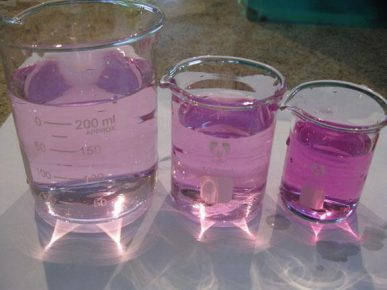
Remember that concentrated solution of manganese will dry out the skin of the pet, and the undissolved crystals may even burn it
To make a weak solution of manganese solution, just add five crystals of the substance to one glass of water. At first glance, it seems that five tiny crystals of potassium permanganate will not be enough. But, as practice shows, this amount of manganese is quite enough to get a pale solution, as in the photo. The main thing is to thoroughly stir the crystals in the water. If you do overdo it, as I did in my first "experience", you can always reduce the concentration of the solution with water.
After clearing the pus from the eyes, you can move directly to the treatment. Ointments have a thick consistency, and therefore last longer than drops. Usually they are applied no more than twice a day, the course of treatment can be up to two weeks. The following preparations are suitable for these purposes:
Anti-inflammatory drops are also used in the treatment of conjunctivitis. These drops are placed into the affected eye three to six times a day in 2 to 3 drops. The entire course of treatment shall take up to three weeks. Some common medications are:
Prevention of pus-filled eyes
If you want to avoid a long and painstaking treatment for your pet, it's better to avoid inflammation altogether. To keep your cat's eyes healthy:
- Reduce the cat's stress levels;
- Use lysine supplements;
- avoid drafts in the house;
- keep the cat cool;
- Maintain the cat's immune system;
- Visit the veterinarian once a year for a preventive exam;
- Get regular checkups;
- Remember about annual vaccinations and quarterly deworming treatments;
- Keep household chemicals away from pets;
- comb your pets' hair gently so it doesn't get into their eyes;
- clean the house more often to avoid dust and dirt;
- Don't let your cat come into contact with stray animals;
- do not touch the pet's eyes without washing your hands thoroughly.
Thus, treatment of a pet with pustular eyes is easy enough to do at home after consulting a doctor. Often it is possible to understand the cause of the pus yourself, but it is better to seek help from a veterinarian right away. The specialist will not only make the right diagnosis, but also help you find effective medication for the cat. With a little patience and attention, you will not only be able to heal your pet's eyes, but also prevent them from getting reinfected.

I love to pee. I love animals. Especially cute fluffy cats, which inspire not only to create articles, but also to write various stories.






